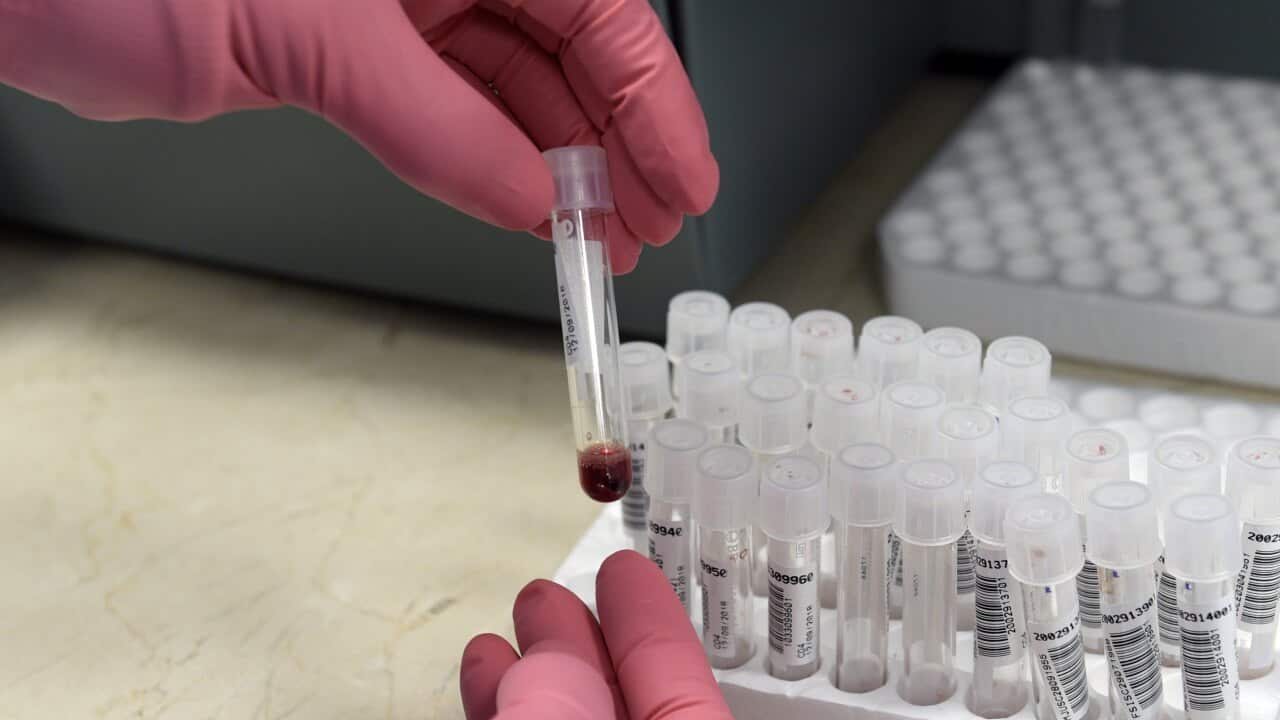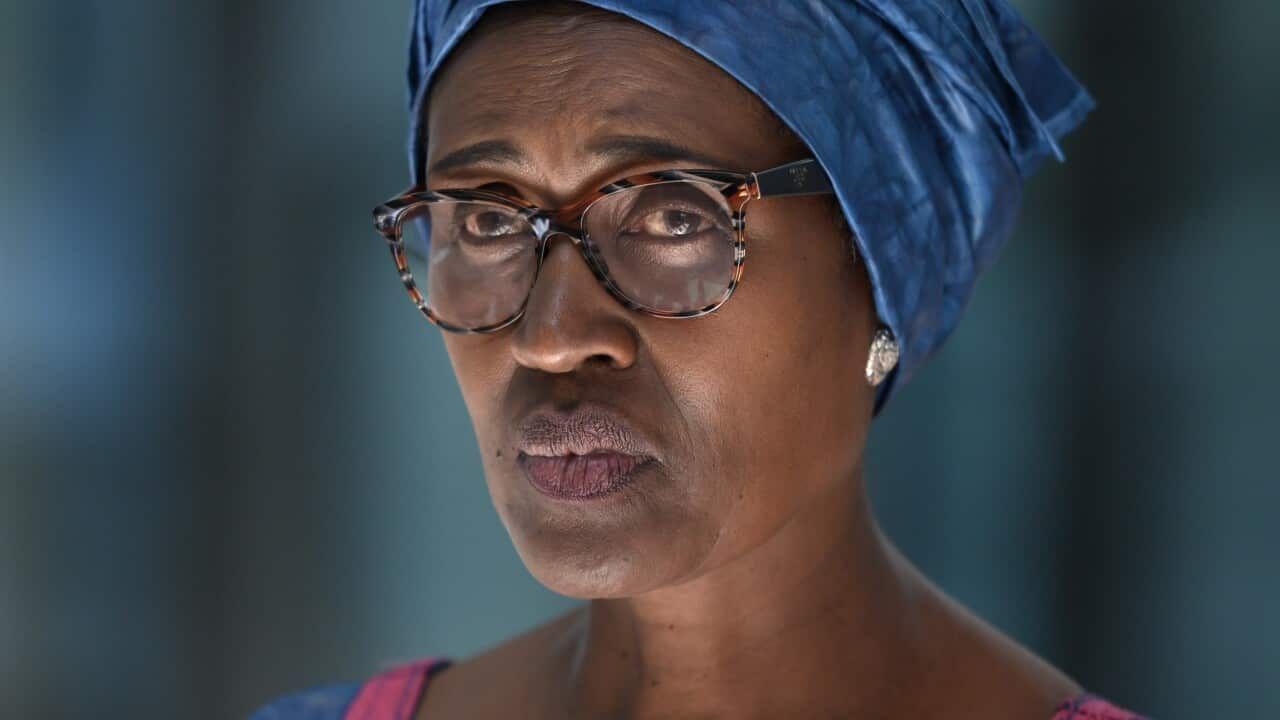Key Points
- Australia has recorded its lowest-ever number of new HIV infections.
- But concerns over the number of people living with the virus for years before detection persist.
Australia has recorded its lowest number of new HIV since the epidemic's outset, but there are concerns over the high number of people living with the virus for years before being diagnosed.
Experts say high uptake among gay and bisexual men who have sex with men of the HIV preventative drug, PrEP, as well as increased testing, and treatment among those living with HIV are the likely drivers behind the fall in infections, with the 552 new cases recorded in 2021 a record low for Australia .
But almost half (48 per cent) of those cases were late diagnoses, meaning an individual was living with HIV for at least four years without knowing it.
What is HIV and what did the figures show?
Human immunodeficiency virus (HIV) weakens the immune system. If a person with the virus does not receive treatment, they will likely develop acquired immunodeficiency syndrome (AIDS) within 10 years, which severely hinders the body's ability to fight infections.
HIV is carried in bodily fluids, such as semen or blood, and is typically transmitted through anal and vaginal sexual intercourse without a condom, or through sharing drug injecting equipment.
Treatment for the virus has come a long way since the epidemic began. The drugs available mean those living with the virus can have a high quality of life, and they can also suppress an individual's viral load, meaning they are not able to transmit HIV. This is commonly known as U=U, or undetectable = untransmissible.
Indeed, the Kirby Institute, , estimated that there were 29,460 living with HIV in Australia at the end of 2021. It predicts that of those, 82 per cent have a suppressed viral load.
Of the 552 new reported HIV infections in 2021, the majority (68 per cent) were in gay and bisexual men who have sex with men. This figure has dropped by more than half (52 per cent) over the past 10 years.
Heterosexual sex accounted for 27 per cent of new HIV cases last year. Diagnoses among heterosexual people have declined at a lower rate — 28 per cent over the past decade.
Injection drug use was attributed to less than 2 per cent of new infections, and the remaining cases were made up of those who had received blood or tissue outside of Australia, and people whose HIV exposure was undetermined or not reported.
Late diagnoses
The Kirby Institute data shows that of the new cases reported last year, 48 per cent were late diagnoses — meaning the individual had been living with HIV for at least four years before detection. It was the highest proportion of late diagnoses since 1990.
"For every year that someone has HIV, that can be doing damage to their immune system and can lead to quite serious infections," said Adjunct Professor Darryl O’Donnell, the CEO of the Australian Federation of AIDS Organisations (AFAO).
"If they don't get that early diagnosis, they go on to very late stage infection. And it's all very unnecessary because HIV treatment is incredibly effective, it's very easy to tolerate, and it's very good at keeping people well and ensuring they live a long life."
Professor O'Donnell said late diagnoses in gay and bisexual men may come as a result of a person having a poor relationship with their doctor, or feeling uncomfortable talking about their HIV risk in certain clinical settings.
"And for some people, HIV can still be quite a frightening thing, so people might be reluctant to text and find out their HIV status. And so we really need to be promoting the importance of regular testing," he said.
A high proportion (58.4 per cent in 2020/2021) of late diagnoses were among people who had acquired HIV through heterosexual sex.
"For many heterosexual people, a late diagnosis can be because they've never perceived themselves to have been at risk," Professor O'Donnell said.
"It could be that they've been for a sexual health checkup, but it didn't include an HIV test, or they haven't had a regular sexual health checkup."
Professor O'Donnell stressed the importance of getting a sexual health test regularly and said that an HIV test shouldn't be an optional part of a screening, something Dr Skye McGregor, an epidemiologist from the Kirby Institute, agrees with.
"If you're getting a test for chlamydia and gonorrhea, you should be getting an HIV test at the same time," Dr McGregor said.
"Rather than do you want one, it's 'let's do it'. It's normal to get all of them done."
The COVID-19 factor
Dr McGregor said the low numbers needed to be considered in the context of the COVID-19 pandemic. In 2021, parts of Australia experienced lockdowns that restricted movement both interstate and intrastate, and Australia's international borders did not open to overseas arrivals until February, 2022.
"There is evidence of a decrease in testing, a decrease in casual sexual partners, as well as a decrease in the movement of people in and out of Australia," Dr McGregor said.
"As we emerge from the pandemic and return to pre-pandemic behaviours, it’s important to remember to re-adopt HIV prevention measures, and to test frequently.
"As HIV testing rates also return to pre-pandemic levels, it is possible we will see increases in the number of HIV diagnoses."
Dr McGregor said Australia is "about halfway" to achieving this, but "the last 50 per cent is going to be the hard bit to get".
"It's probably the groups that have faced the greatest inequity in the [HIV] response," she said.
"So our challenge now is developing tailored programs in consultation with affected communities that ensure equity of access for appropriate prevention and care strategies.
"That might be testing, that might be treated, that might be PrEP."











